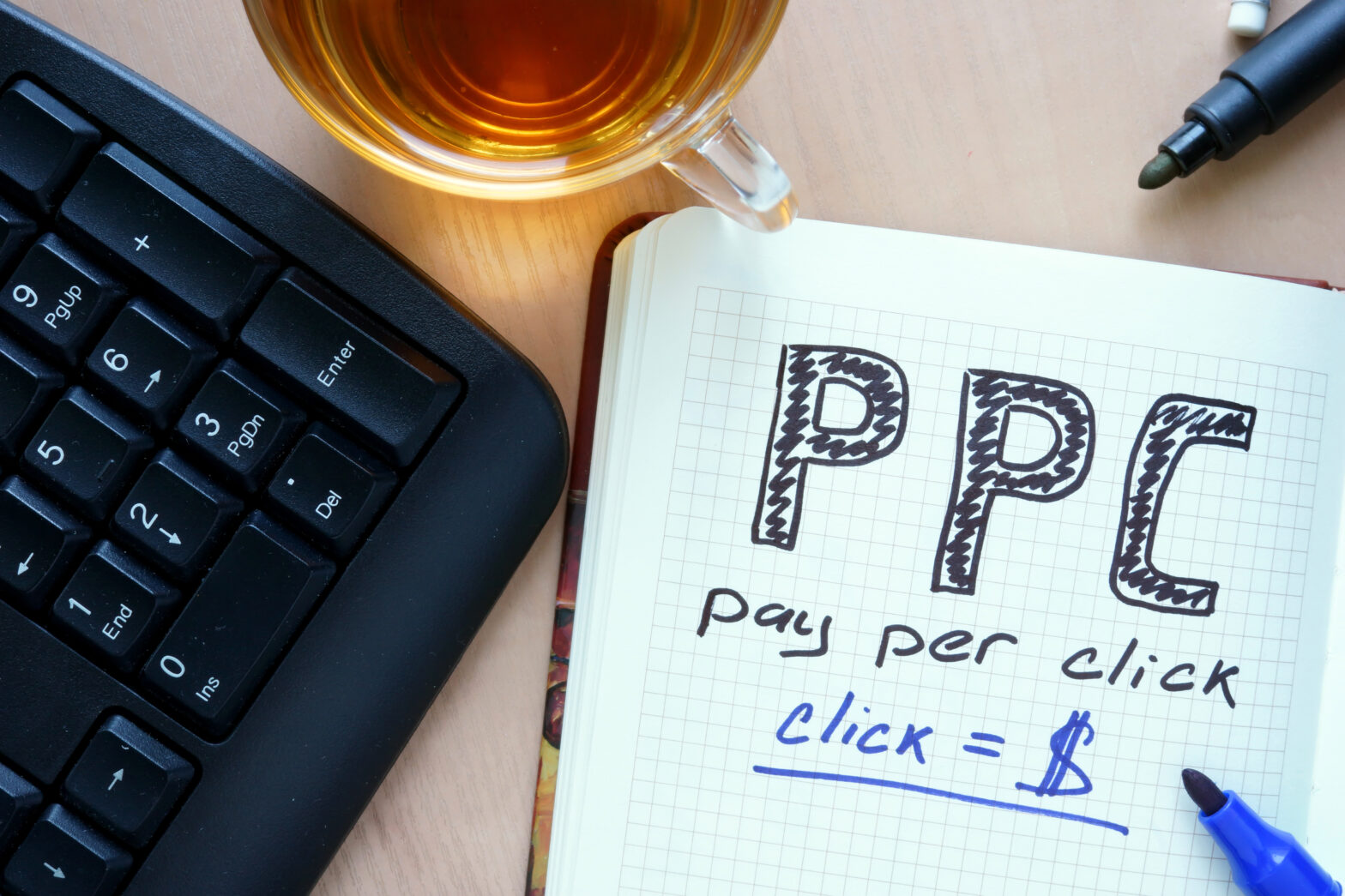It’s been quite awhile since we last looked at Pay per Click (commonly shortened to PPC) advertising on search engines, and while the basics remain the same, there have been some important changes since that last article and there is also a major market-changing event in the pipeline to which you should be alerted.
It’s been quite awhile since we last looked at Pay per Click (commonly shortened to PPC) advertising on search engines, and while the basics remain the same, there have been some important changes since that last article and there is also a major market-changing event in the pipeline to which you should be alerted.
Google AdWords versus the rest
In the UK, Google AdWords is still the main PPC platform for most advertisers – and by quite some distance in terms of market share with estimates that it attracts approximately 92% of total spend in this channel. Many small businesses that do PPC only use AdWords – and why not? It’s easy to set-up, easy to use, and (relatively) easy to integrate with the Google Analytics package that Google makes available for free.
However, there is still that other 8 per cent or so of the market and this is mostly taken up by the two PPC platforms from the other two main search engines – Microsoft adCenter and Yahoo Search Marketing UK [UPDATE 2017: Now defunct]. Some UK small businesses are missing a trick if they are ignoring these platforms, not simply because of the missed eight per cent or so of clicks, but also because they do serve some separate audiences (although there is of course of much overlap). Also, there is some evidence that Microsoft’s Bing search engine is (slowly) gaining market share.
The big news in the PPC sector is that in 2012, Yahoo and Microsoft will be merging their PPC platforms, with adCenter taking over all the duties. Indeed, this has already happened in the USA and Canada (back in 2010). Therefore, it is our recommendation that businesses who wish to expand their PPC use outside of Google’s AdWords, should concentrate only on Microsoft’s adCenter.
New PPC strategies, new complications
Google has been relentless in its drive to improve its AdWords product over the last few years. At times it has seemed as if it has been releasing a new update every month. Whilst this has undoubtedly improved its effectiveness, and given the attentive PPC marketer a whole host of new tools with which to refine campaigns and target new audiences, it has also made the market more complicated. In the simple days of yore, a business could pick a few keywords, pop in a bid for a maximum cost-per-click (CPC), make some simple targeting options (by country, region, time of day etc.) and sit back and measure results. This is still possible – the AdWords interface offers the new advertiser a guided route to set-up campaigns with just these steps. But there is a lot more power under the bonnet of the AdWords engine, and you can be sure that at least some of your competitors are tapping it. Some examples:
– Expanded control over keywords featuring broad match, phrase match, exact match and negative match
– Demographic targeting (Display Network only) including Contextual Targeting
– Split A/B/C testing of ads / ad copy
– Integration of conversion tracking with Google Analytics
– Integration of ads with Google Merchant Center and Google Places (Product Extensions)
– Top vs. Side’ Ad Performance Segmentation
– Banner and MPU advertising (including Flash ads)
– Video Ads
– Geo-location targeting (specify ads to be shown with a geographic radius) and language targeting
– Devices targeting (e.g. Mobile Ads with click to call phone extensions or Tablet Targeting, if you only want to show ads to tablet users)
etc etc etc. The above list barely scratches the surface. Despite being a full-time PPC specialist, the writer of this article has trouble keeping up, seemingly spending half his life in web seminars trying to stay on top of the latest initiatives. For this reason (we suspect), Google have finally created an AdWords helpine to help make sense of it all. For UK users the number is – 0845 600 0278.
Microsoft have not been still either. The company has put a lot of effort into improving both its Bing search engine and the adCenter platform. Whilst not as powerful as AdWords, it is nonetheless an elegant platform in many ways – and vastly superior to the Yahoo offering. Most importantly, it gets good results for some advertisers, particularly B2C businesses with an online shop.
More players, higher prices
If increased complexity has been one notable change in PPC in the last few years, higher click prices has been the other main effect – and the most noticeable on companies’ bottom lines.
The ratcheting effect of more competitors entering the market has created a broad lifting of CPC averages across all keyword groups – and some intense price rises in certain markets like travel, consumer electronics, real estate and financial products. Some examples from our own experience:
– top bids for ISA products keywords (e.g. cash isa / equities ISA / transfer an ISA) can average over £4.00 – yes that’s £4.00 just for a click through – or more.
– top bids for travel keywords (e.g. flights to berlin, portugal beach apartment, cheap flight thailand etc.) now average over £2.50
– top bids for baby feeding products (like baby bottles / weaning sets etc.) have risen from 10 pence in 2008 to over 40 pence in 2011. Bear in mind that the sale price of these products is less than £4.00 – so on a simple unit sale basis it is unprofitable and you have to factor in repeat sales or simply the costs of buying market share in order to justify the price.
– the highest bids we have experience for are in the home / house insurance market with the major players topping £8.00 average bid.
For many small businesses this has been a bad development, for where as in the past they could often compete with bigger players on a more-or-less level playing field despite having a smaller budget, now in some sectors it is difficult to compete. Again, the complexity element plays a part, because larger companies can afford to employ PPC specialists who have access to powerful PPC tools that minimise bidding costs, ensure full keyword coverage and maximise lead conversion.
In terms of CPC rates, Microsoft’s adCenter can sometimes come into its own here. Bid levels are generally much lower simply as a function of the competition being generally less intense. Yes, the volume is concomitantly smaller, but Return on Investment (ROI) should be the advertiser’s main preoccupation, and lower CPC averages clearly help with that.
Nicheing and the long-tail keyword – The No.1 Strategy
In the face of all these developments how can the small business compete? Is it even worth it? Well, yes is the short answer to both questions, but they have to be laser-focused on their ROI.
The most common mistake we see with companies new to the PPC process is a lack of keyword focus – often combined with too-high bids and a lack of results monitoring. So here are our top 5 PPC strategies for UK SMEs – designed to avoid the common pitfalls;
1. Define your goals (conversions) – and set up your analytics tracking to measure them. Work out what your budget is for a defined period and what you want to achieve within that time – be it sales, leads or simply visits to a specific product page.
2. Create specific landing pages for your ads that are strongly aligned with your ad copy (which will help lower bid prices). If it is an e-commerce campaign, make sure the sales funnel is as simple and encouraging to the visitor as possible.
3. Keyword Nicheing (the No.1 most important PPC strategy). When starting a new campaign, keep your keyword groups small, make all keywords ‘exact match’ and try to focus on the ‘long tail‘, where bid prices are usually lower but conversion rates higher. Remember, you can always add keywords to the group later and expand to ‘phrase match’ or even ‘broad match’ if the exact match is proving successful.
4. Bid low initially, lower than Google will prompt you, and gradually raise until you reach a nice balance between click volume and CPC.
5. Monitor and Refine. Once you have run your initial campaign within its defined time limit, do the maths. Try new adcopy and / or tweak the landing pages and run the campaign again. Experiment with various combinations until you have the best results. If it works out that you cannot achieve a profitable ratio admit defeat and abandon the keyword group.
Enter Facebook
Although not a search engine, it is worth mentioning briefly that Facebook now runs a paid search platform as well. It’s main advantage is of course its well-defined user base. As a social network, Facebook has incredible data on its users likes, dislikes, demographics etc. – and by extension their socio-economic status – which you as an advertiser can tap into. This means you can create very targeted campaigns and, while it is still in its infancy, at a decent bid rate – although expect this to change as more businesses jump on board.
The main problem we are experiencing with Facebook advertising at the moment though is the suspicion that surrounds such commercialisation on this platform from some segments of its users. The direct sell appears to be less effective on Facebook when compared to the search engines. Instead, we are finding it better as a tool to create user engagement with a product or brand – and translating that into measurable ROI is clearly a more complicated proposition.





